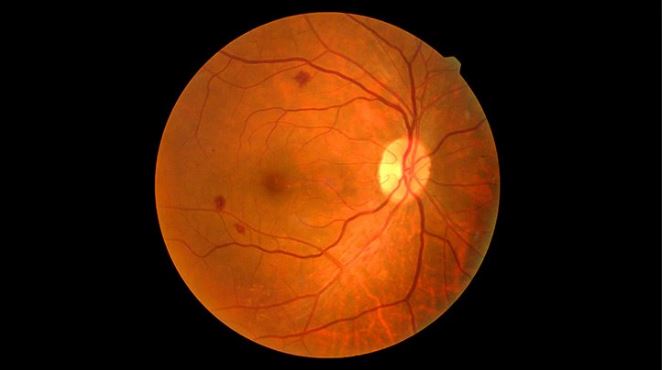Diabetic Macular Edema (DME) is the leading cause of vision loss in persons with diabetes. It is a consequence of diabetic retinopathy that affects the eyes causing buildup of fluid in a region of the retina called the macula. Edema is swelling caused by fluid retention. The macula is a small, oval-shaped area near the center of the human eye. The macula is responsible for the sharp, central vision needed to perform daily tasks such as reading, driving, recognizing faces, and distinguishing colors and detail.
There are nerve cells, referred to as cones, in the macula that are responsible for sensing light. With DME, when the macula begins to fill with fluid, your nerve cells’ ability to sense light is impaired and may lead to severe blurred vision.
The severity of each case of diabetic macular edema is dependent upon:
- Diabetes type
- Length of time patient has had diabetes
- Fluid retention
- Degree of diabetic retinopathy
- Whether or not patient has severe hypertension
- Hyperlipidemia (high fat levels in the blood)
- Hypoalbuminemia (low protein in body fluids)
</ br>
Methods used to detect DME include a comprehensive dilated eye examination with the following:
- Dilated eye examination
- Optical coherence tomography (OCT)
- Fluorescein Angiography
</ br>
There are several methods used to treat DME which may be used alone or in combination:
- Focal laser treatment
- Vitrectomy
- Anti-VEGF injection therapy
- Corticosteroids
</ br>
DME risk factors
- Cigarette smoking – increases the risk of diabetic retinopathy which may lead to DME
- Hyperglycemia – keeping your glycemic levels as close to normal as possible may prevent or delay the development of DME or diabetic retinopathy
- Hypertension – high blood pressure
- Vitreomacular adhesion – where the vitreous attaches to the retina at the macula
- Dyslipidemia – abnormal triglyceride and cholesterol levels
- Nephropathy – heart disease, cardiovascular disease and kidney disease
</ br>
Other risk factors include sleep apnea, anemia, frequent alcohol consumption, glitazone usage, genetics, and a sedentary lifestyle.
Diabetes currently affects about 29 million people in the United States (9.3%) according to the CDC (Center for Disease Control and Prevention) – of those 29 million, 1 in 4 don’t know they have the disease. DME affects up to 30% of people who have had diabetes for more than 20 years. And 20 to 30% of people with DME will experience moderate vision loss, if left untreated.
The longer you live with diabetes, the greater your chances of developing diabetic macular edema. An annual, dilated eye examination may lead to early detection and treatment can reduce the risk of blindness greatly.

